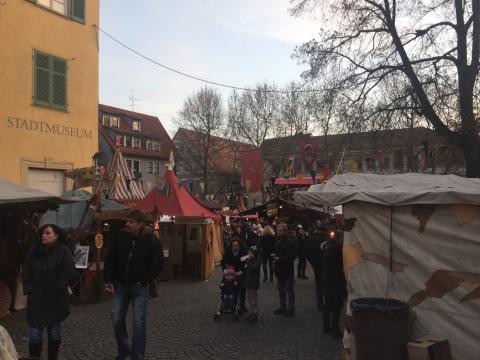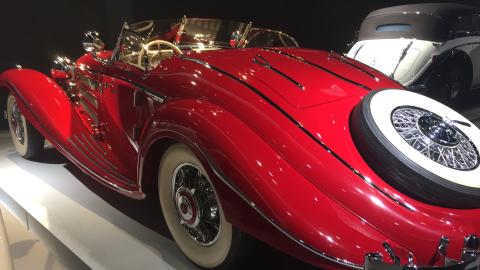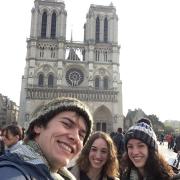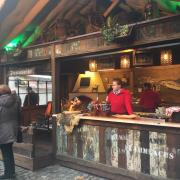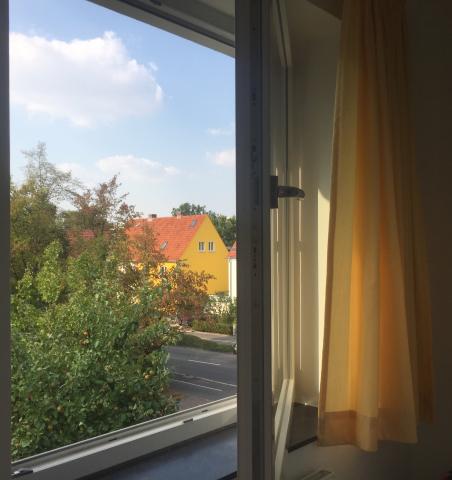I know, I know…it’s only the beginning of November and way too early to start celebrating Christmas! But since Europeans don’t celebrate Thanksgiving, Christmas is a HUGE deal here. I’ve spent the last two weekends exploring new cities, and I’ve already noticed holiday spirit popping up.
Two weeks ago in Amsterdam, red and gold lights were strung across the streets in the city center.
This past weekend, I traveled to the nearby city of Braunschweig with a group of other international students. Braunschweig is in Lower Saxony, the same region as my university, and all students can take the regional trains for free! The city wasn’t quite as decked out as Amsterdam, but we came across a couple of cozy markets that made the chilly Saturday feel warmer.
First we wandered through a French market, sampling gigantic cheeses, quiches, and chocolate croissants. Then we discovered two more “traditional” markets, with very cute food stands offering sausages, smoked salmon, and a drink called Glühwein that I’m now a little obsessed with. A staple at all Christmas markets in Germany, it’s essentially warm red wine, which sounds gross, but hear me out. It’s flavored with cinnamon and cloves, more like a cozy spiced drink than wine, without any bite. And it tastes exactly like an afternoon curled up by a roaring fireplace. I will admit that the flavor is a little overwhelming, and one cup was more than enough, but that doesn’t mean I won’t keep buying it at all the other Christmas markets I see!
What I really enjoyed about the holiday markets was how much care each business put into their display. Many of the food stands were made of real wood with sturdy overhangs, spacious interiors, and hunting- or nature-themed decorations.
A stand at the holiday market selling smoked salmon, freshly made over a crackling fire.
In addition to the food stands, there was a small stage where a local German band performed a few cheerful songs. Everyone was sipping Glühwein or beer and enjoying the festive atmosphere, live music, and company of friends. My friends and I left the market very excited to visit more in the future!
We ate lunch in a traditional German Gasthaus—an inn with a restaurant and brewery, like a bed & breakfast but with more focus on beer and sausages. Most of us tried Currywurst, which is a GIANT bratwurst covered in a sweet ketchup-like sauce with a bit of curry seasoning. When I say giant, I mean that these bratwursts are served on full-size plates but stick out off the plate on both ends. French fries or boiled potatoes usually come on the side—the Germans love their meat and potatoes. I’ve been amazed at how many different variations of potato dishes exist here!
By the time we caught the train back to Göttingen, it had already been dark for several hours (thanks, daylight savings) and felt much later than it was. We were worn out from walking all day, but full of hearty food and festive memories!

